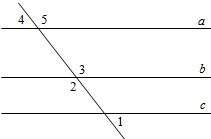
Mathematics, 24.10.2020 14:00 Jasten
Peanut allergies are becoming increasingly common in Western countries. Some evidence points to the timing of peanuts' first introduction in the diet as an influential factor, raising the question of whether pediatricians should recommend early exposure or avoidance. A study enrolled infants with a diagnosed peanut allergy and randomly assigned them to either completely avoid peanuts or consume peanuts in small amounts regularly until they reached 60 months of age. At the end of the study, 18 of the 51 infants who had avoided peanuts were still allergic to peanuts. In contrast, 5 of the 47 infants who had consumed peanuts were still allergic to peanuts.
Do the data indicate that one approach is more beneficial? Follow the four‑step process.
STATE: What is the question we are asking?
A. Does early exposure to peanuts better reduce peanut allergy in children with a known allergy to peanuts?
B. Should all children under the age of 60 months avoid peanuts or only eat them in small amounts?
C. Does early exposure to peanuts in small amounts or complete avoidance of peanuts better reduce peanut allergy in children with a known allergy to peanuts?
D. Should all children under 60 months eat peanuts regularly in small amounts?
PLAN: What plan is the best for this situation?
A. Calculate and compare the number of children with a peanut allergy.
B. Calculate and compare the conditional distributions of the age of the children with a peanut allergy.
C. Calculate and compare the type of peanuts that cause allergies in children under 60 months.
D. Calculate and compare the conditional distributions of allergy among the type of peanut consumption.
SOLVE: Fill in the conditional distributions in the table by entering the numeric entries that correspond to a–d. (Enter your answers rounded to one decimal place.)
Allergy No allergy
Avoid Peanuts a% b%
Consume Peanuts c% d%
a=
b=
c=
d=
CONCLUDE: What conclusion does the data indicate?
A. Both avoidance and consumption of peanuts in small amounts reduced peanut allergy in this study. 89.4% of the group of children with a known peanut allergy that consumed peanuts in small amounts until age 60 months no longer were allergic to peanuts. 64.7% of the children with a known peanut allergy that completely avoided peanuts for 60 months were no longer allergic to peanuts. It appears that exposure to peanuts in small amounts better reduces peanut allergy.
B. There is not enough information to make a conclusion.
C. Both avoidance and consumption of peanuts in small amounts had no effect on peanut allergy in this study. The group of children with a known peanut allergy that consumed peanuts in small amounts until age 60 months and the children with a known peanut allergy that completely avoided peanuts for 60 months were just as allergic to peanuts. It appears that exposure to peanuts in small amounts has no effect on peanut allergy.
D. Both avoidance and consumption of peanuts in small amounts increased peanut allergy in this study. Only 10.6% of the group of children with a known peanut allergy that consumed peanuts in small amounts until age 60 months no longer were allergic to peanuts. 15.3% of the children with a known peanut allergy that completely avoided peanuts for 60 months were no longer allergic to peanuts. It appears that exposure to peanuts in small amounts has no significant effect on reducing peanut allergy.
E. Both avoidance and consumption of peanuts in small amounts reduced peanut allergy in this study. 64.7% of the group of children with a known peanut allergy that consumed peanuts in small amounts until age 60 months no longer were allergic to peanuts. 89.4% of the children with a known peanut allergy that completely avoided peanuts for 60 months were no longer allergic to peanuts. It appears that exposure to peanuts in small amounts better reduces peanut allergy.

Answers: 3


Another question on Mathematics

Mathematics, 21.06.2019 20:30
Which shows the graph of the solution set of 3y – 2x > –18?
Answers: 1

Mathematics, 21.06.2019 23:30
Without multiplying, tell which product is larger and why. 5 × 1/3 or 5 × 2/3 a)5 × 1/3 because 1/3 is less than 2/3 b) 5 × 1/3 because 1/3 is greater than 2/3 c) 5 × 2/3 because 1/3 is less than 23 d) 5 × 23 because 1/3 is greater than 2/3
Answers: 1

Mathematics, 22.06.2019 00:50
What is a correct first step in solving the inequality-4(3-5x)> -6x+9
Answers: 2

You know the right answer?
Peanut allergies are becoming increasingly common in Western countries. Some evidence points to the...
Questions

Social Studies, 11.10.2019 07:30



Biology, 11.10.2019 07:30

History, 11.10.2019 07:30

Social Studies, 11.10.2019 07:30

Mathematics, 11.10.2019 07:30

Mathematics, 11.10.2019 07:30


Social Studies, 11.10.2019 07:30













